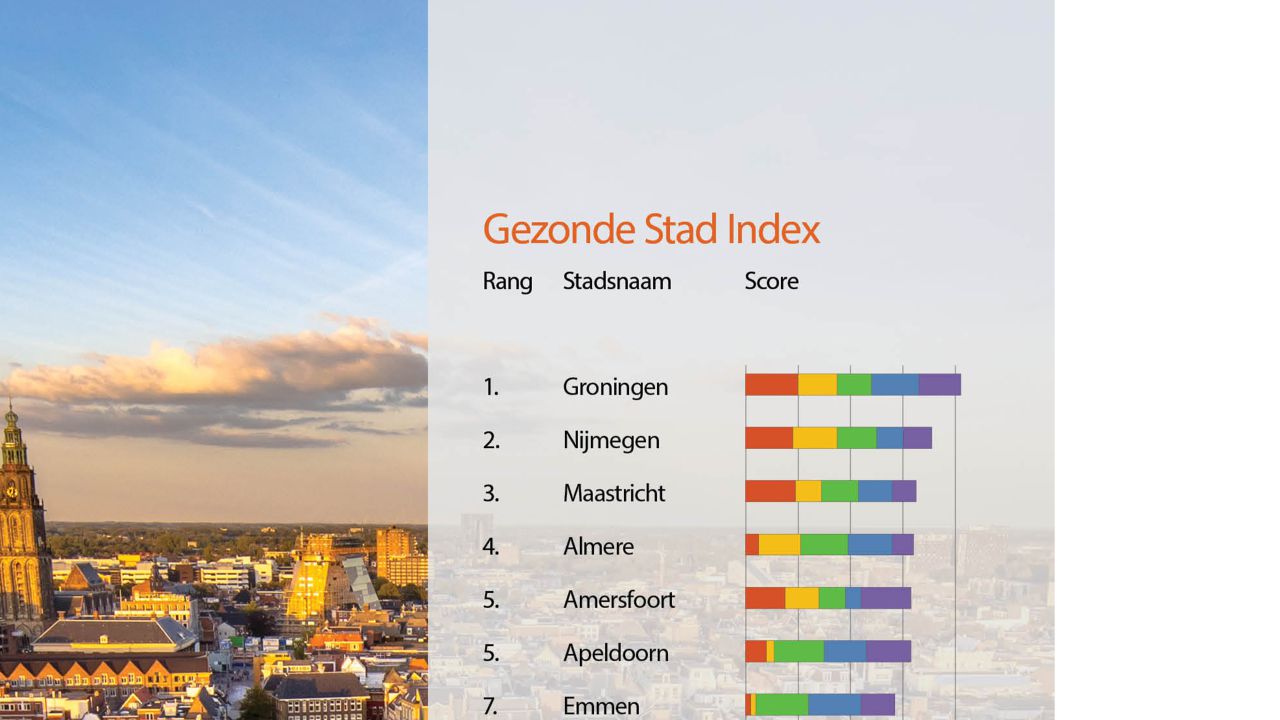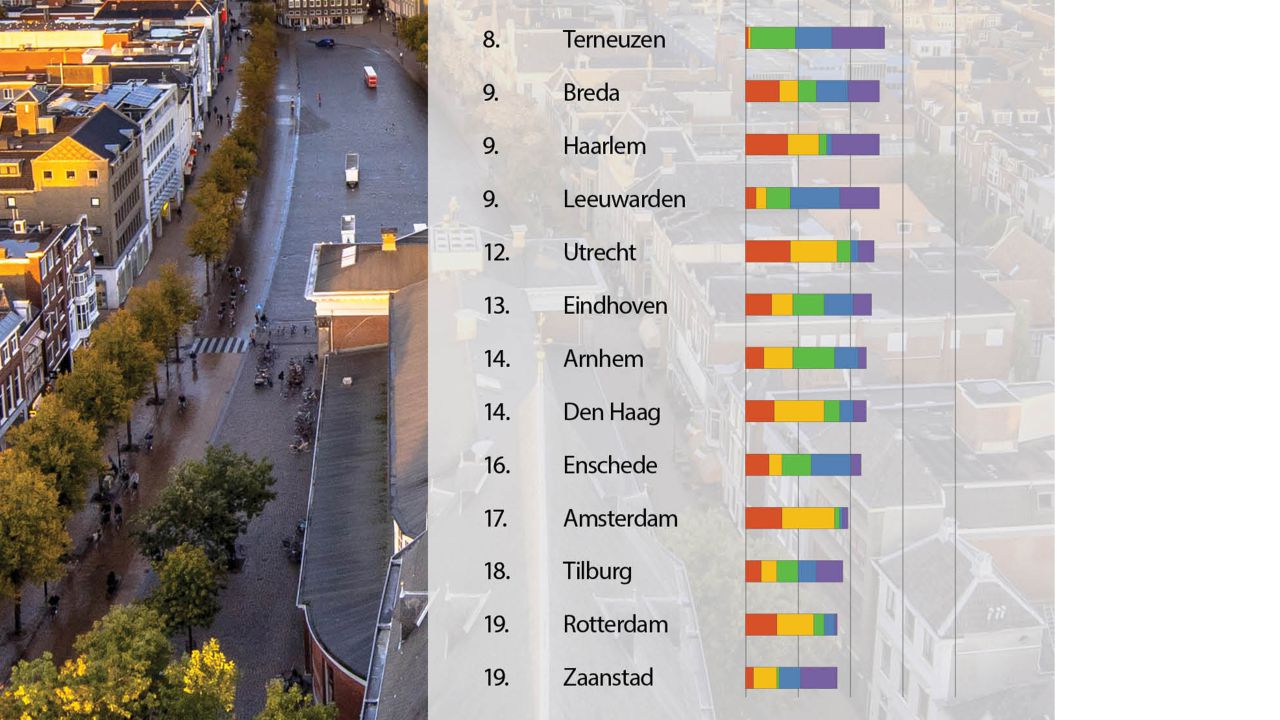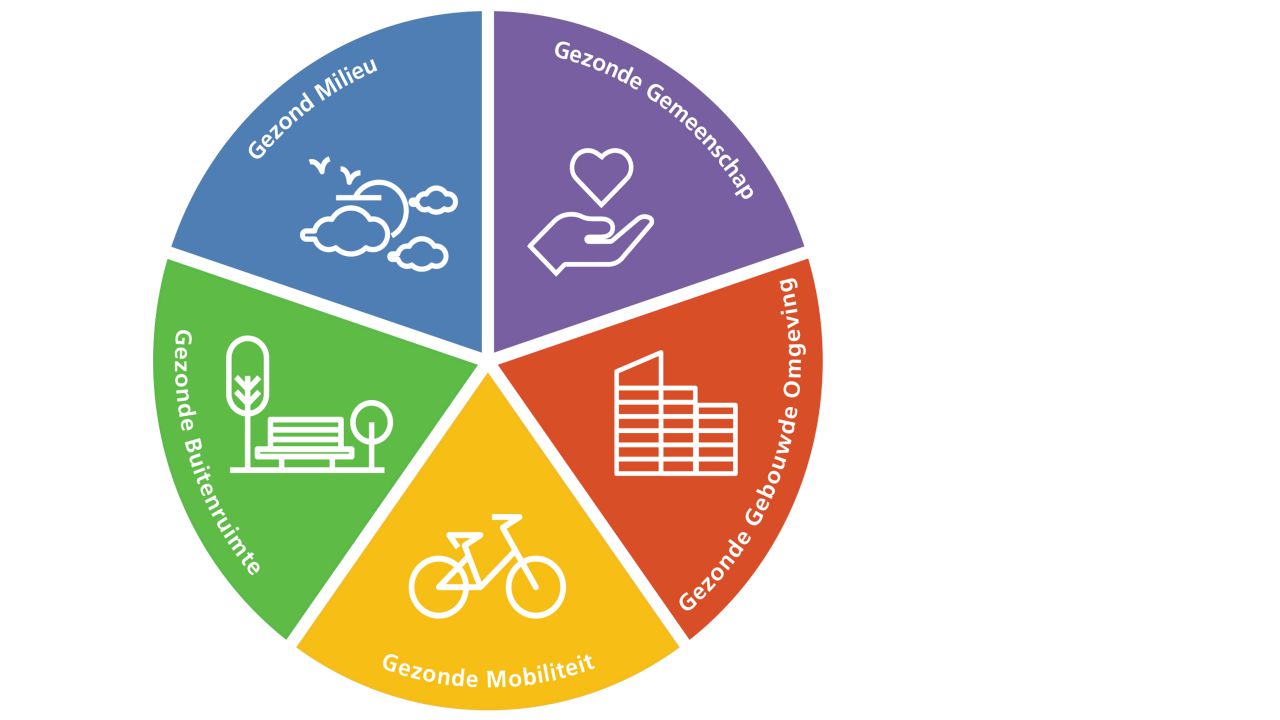
According to this study, Groningen is the healthiest city in the Netherlands. Nijmegen is in second place, with Maastricht coming in third. We evaluated the twenty cities (the largest municipality in each province, along with the eight largest municipalities in the Netherlands) on the basis of five components: mobility, outdoor space, climate, built environment and community. Our researchers made use of data from the National Institute for Public Health and the Environment (RIVM), the Municipal Health Services (GGDs) and Statistics Netherlands.

Most of the cities studied will see a significant increase in the number of residents over the coming years. This will result in rising pressure on public (green) spaces. Meanwhile, COVID-19 will also have long-term implications for the demands we make of our living environment. People will probably continue to work from home more, so local recreational facilities will become increasingly important. This will require cities to change, with less tarmac and more greenery. At the same time, the capacity of these green spaces is limited in many cities. Landscaping of new parks requires space and money, which in turn demand a long-term approach. But something we can do immediately is to open up sports fields and make use of vacant plots for recreation, for example.”
Theo van Alpen (RIVM) "Inspired by knowledge about healthy cities from the National Institute for Public Health and the Environment (RIVM) and the GO! healthy environment method, the Healthy City Index provides a great overview of how healthy the design of our cities is and where there are opportunities for improvement. Congratulations on this fantastic result.”
Jeannette Nijkamp (Hanze Univeristy of Applied Sciences)“As a lecturer in Healthy Cities at the de Hanze University of Applied Sciences, I carry out research into the relationship between the built environment and lifestyle and health. I work in close cooperation with the Municipality of Groningen here. As can also be seen in the Healthy City Index, the Municipality of Groningen makes a healthy living environment a high priority. Hard work is currently being carried out to improve pedestrian-friendliness and play facilities as well as to improve the quality of housing in the inner city. The municipality is also experimenting with interventions like temporary cycle routes, to find out what does and doesn’t work.


